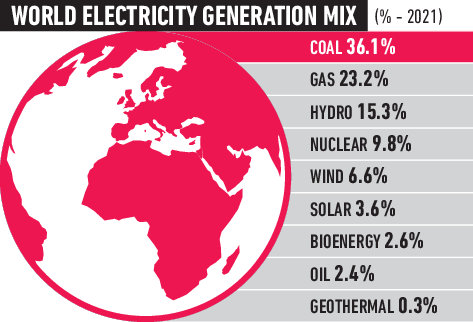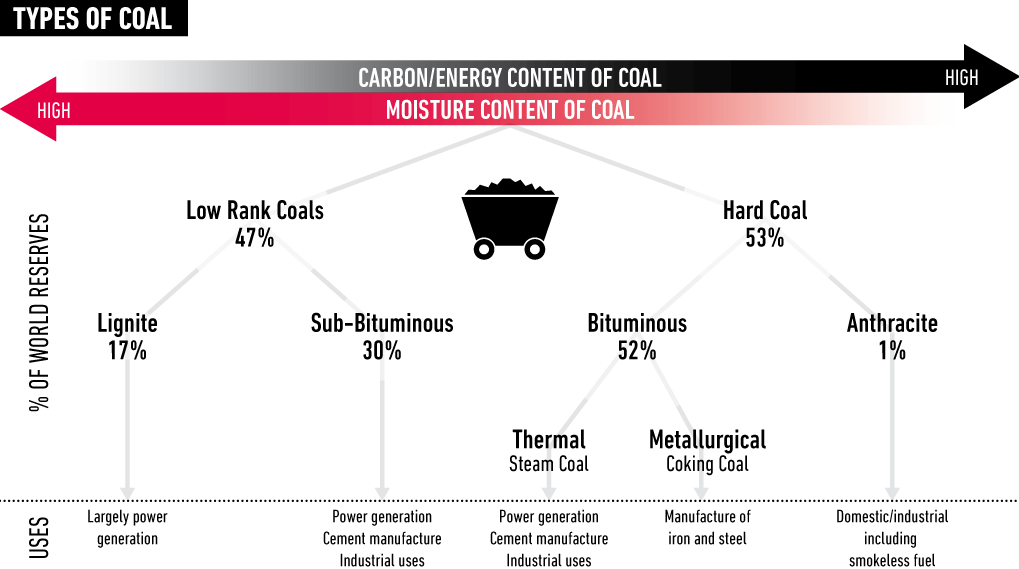
Energy Sources: Coal
Coal is a particular type of sedimentary rock composed primarily of carbon, hydrogen, oxygen and nitrogen. It originates from plant material accumulated in swamps and bogs in warm environments, much of which dates back precisely to the Carboniferous Period (from 360 million to 290 million years ago). The actual features of coal depend on the age of the deposit. Peat is the first grade. In order of organic maturation, it is followed by lignite, bituminous coal and anthracite coal, the most sought-after and calorific. Over 90% of reserves are located in the Northern Hemisphere, which was once full of warm environments and forests.
The modern coal mines, after centuries of manual labour, now use big machines that crush and collect the rock, bringing it up to the surface, where it is washed, ground and sieved. These processes prepare the coal for transportation, which takes place using traditional means (trucks, trains and ships) or via coal pipelines in which the ore is mixed with water (slurry) and flowed through pumps. Worldwide, most of the coal produced in each country is consumed domestically, especially in the production of electric energy.
- EIA (US Energy Information Administration), International Energy Statistics [Last accessed 14 December 2022];
- IEA (International Energy Agency), World Energy Outlook 2022;
- WCA (World Coal Association)
